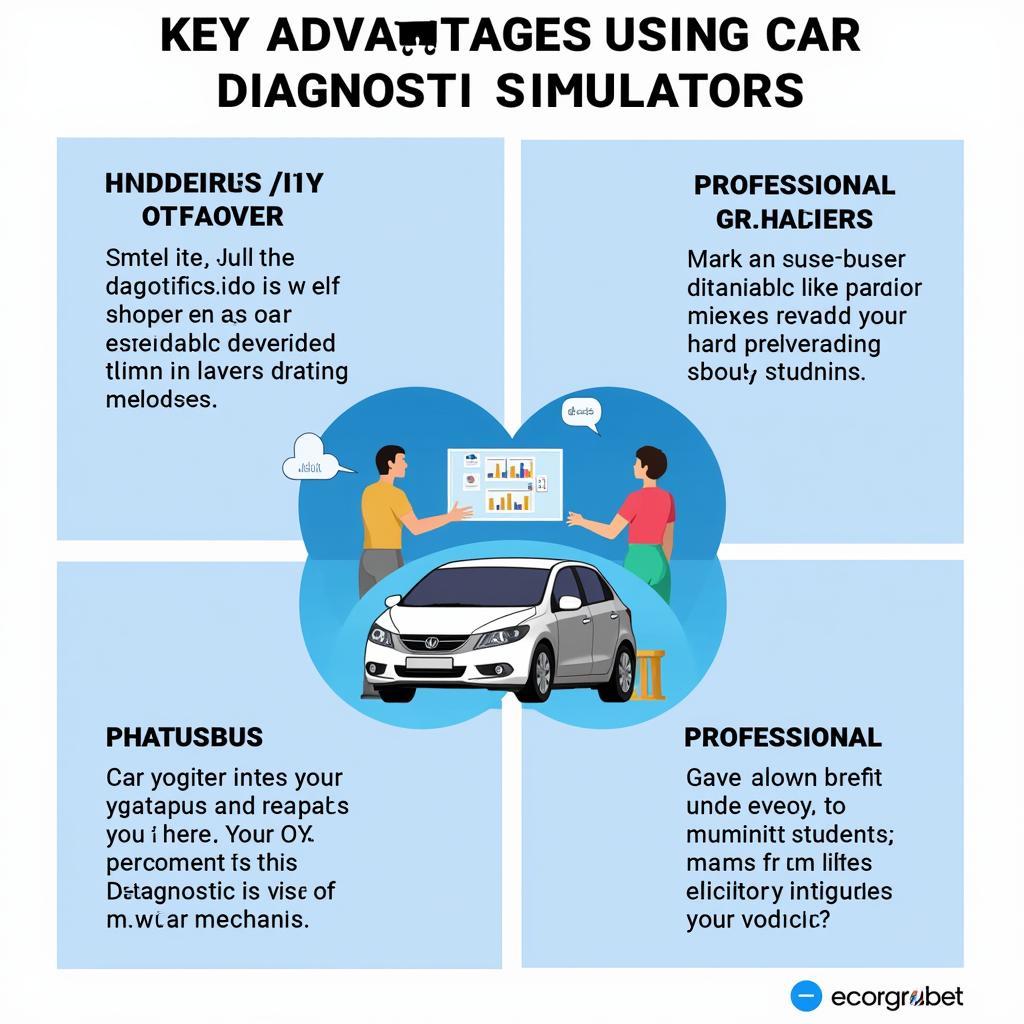A Car Diagnostic Simulator is a powerful tool for anyone looking to understand, diagnose, and even predict vehicle issues. Whether you’re a seasoned mechanic or a car enthusiast eager to learn more about your vehicle, understanding how a car diagnostic simulator works and its potential benefits can be a game-changer.
What is a Car Diagnostic Simulator?
In simple terms, a car diagnostic simulator replicates the electronic systems of a vehicle, providing a safe and controlled environment to learn and practice car diagnostics. It mimics the signals and data transmitted by various car components, allowing users to diagnose problems without needing access to a physical car.
Think of it as a flight simulator for mechanics. Just like pilots use simulators to hone their skills without the risk of an actual flight, car diagnostic simulators provide a virtual garage where aspiring and professional mechanics can test their knowledge and improve their diagnostic abilities.
Why Use a Car Diagnostic Simulator?
The benefits of using a car diagnostic simulator are numerous, appealing to a wide range of individuals and organizations:
- For Automotive Students: It serves as an invaluable educational tool, offering a hands-on approach to understanding the complexities of modern vehicles. Students can learn about different fault codes, their meanings, and how to approach diagnosis and repair.
- For DIY Enthusiasts: It empowers car owners to delve deeper into their vehicles’ inner workings. By understanding how to use a car diagnostic simulator, individuals can diagnose and potentially fix minor issues themselves, saving time and money.
- For Professional Mechanics: It offers a platform for continuous learning and skill development. Mechanics can stay updated on the latest vehicle technologies, practice complex diagnostics, and refine their troubleshooting techniques.
 Benefits of Car Diagnostic Simulators
Benefits of Car Diagnostic Simulators
How Does a Car Diagnostic Simulator Work?
Car diagnostic simulators work by connecting to a device, often a laptop or a dedicated diagnostic tool, through a USB port. They communicate using the OBD-II (On-Board Diagnostics) protocol, the standard communication system in modern vehicles.
When a user initiates a simulation, the simulator generates specific fault codes and data streams that mimic real-world scenarios. These codes and data are then displayed on the connected device, allowing the user to analyze the information and practice their diagnostic skills.
Choosing the Right Car Diagnostic Simulator
With a variety of car diagnostic simulators available, selecting the right one depends on your specific needs and budget:
- Software-Based Simulators: These are often more affordable and offer a wide range of simulated vehicles and fault scenarios. They are ideal for beginners and those looking for a flexible learning tool.
- Hardware-Based Simulators: These provide a more realistic experience, often replicating the physical look and feel of a vehicle’s electronic control unit (ECU). They are suitable for professional training environments and advanced users.
Key Features to Consider
When choosing a car diagnostic simulator, keep these features in mind:
- Vehicle Coverage: Ensure the simulator supports the makes and models of vehicles you intend to work on.
- Fault Code Library: Look for a simulator with an extensive database of fault codes, covering a wide range of potential issues.
- Realistic Simulations: The simulator should provide realistic data streams and fault code combinations to accurately mimic real-world scenarios.
- User Interface: A user-friendly interface is crucial for ease of use and efficient learning.
- Updates and Support: Opt for a simulator that offers regular updates to stay current with the latest vehicle technologies.
Car Diagnostic Simulators: The Future of Automotive Diagnostics
Car diagnostic simulators are revolutionizing the way we approach automotive diagnostics. As vehicle technology advances, these simulators will play an increasingly crucial role in training the next generation of mechanics and empowering car owners to take charge of their vehicle’s health.
By providing a safe, controlled, and cost-effective way to learn, practice, and master car diagnostics, these simulators are not just tools; they are investments in the future of automotive repair.
FAQs about Car Diagnostic Simulators
1. Do I need any prior knowledge to use a car diagnostic simulator?
While some basic knowledge of car mechanics is helpful, many simulators are designed to be user-friendly and guide beginners through the process.
2. Can a car diagnostic simulator damage my car?
No, simulators cannot damage your car. They work independently of your vehicle’s actual systems, providing a safe environment for practice.
3. What types of faults can a car diagnostic simulator simulate?
Simulators can replicate a wide range of faults, from simple sensor issues to complex engine management problems.
4. Can I use a car diagnostic simulator with any diagnostic tool?
Most simulators are compatible with standard OBD-II diagnostic tools and software.
5. Are car diagnostic simulators expensive?
The cost varies depending on the type and features. Software-based simulators are generally more affordable than hardware-based options.
Still have questions?
If you need further assistance or have any other questions, please don’t hesitate to reach out to our dedicated customer support team available 24/7 via WhatsApp: +1(641)206-8880 or Email: cardiagtechworkshop@gmail.com. We’re here to help!

Leave a Reply